Most people think NFTs are just pictures. But the real value? It’s in the NFT metadata. Without it, your digital art is just a file with no history, no traits, no story. And if the metadata breaks? Your NFT loses nearly all its value.
What Exactly Is NFT Metadata?
NFT metadata is the behind-the-scenes data that tells a blockchain what your token actually represents. It’s not stored on the chain itself - that would be too expensive and slow. Instead, the NFT holds a pointer - a URL - that leads to a JSON file containing all the details: name, image, description, traits, and more.
Think of it like a passport. The token on the blockchain is the passport number. The metadata is the passport itself - with your photo, name, birthdate, and nationality. Without the passport, the number means nothing.
Every NFT you see on OpenSea, Magic Eden, or Rarible has metadata. If the metadata is missing, wrong, or hosted on a server that shuts down, your NFT becomes a broken link. That’s why getting metadata right isn’t optional - it’s survival.
The Core Fields: What Every NFT Metadata File Must Have
There’s no single global law for NFT metadata, but there’s a clear industry standard built on Ethereum’s ERC-721. Most platforms - especially OpenSea - expect the same core fields. If you skip them, your NFT won’t display properly.
Here’s what every metadata file needs:
- name: The title of your NFT. Keep it under 50 characters. OpenSea truncates longer names.
- description: A short story or explanation. Supports basic Markdown for bold, italics, and line breaks.
- image: The main visual. Must be a direct URL to a JPG, PNG, GIF, or MP4. Minimum 350x350px. Higher resolution (5,200x5,200px) is preferred for art NFTs.
- external_url: A link to your website, Discord, or project page. Helps buyers learn more.
- attributes: The heart of collectibility. An array of trait objects, each with trait_type and value.
Example of a simple attributes array:
{
"trait_type": "Fur",
"value": "Brown"
}
Some platforms support optional display_type to control how values are shown - like "number" for stats or "date" for release times. This helps marketplaces display traits as sliders, badges, or timelines.
ERC-721 vs ERC-1155: Two Standards, Different Goals
Not all NFTs are created equal. Two Ethereum standards dominate the space - and they handle metadata differently.
ERC-721 is the original. Each token is unique. It’s used for digital art, collectibles, and one-of-a-kind items. The tokenURI() function returns the metadata URL. It’s simple, but rigid - one contract per NFT collection.
ERC-1155 is the upgrade. It lets you bundle multiple NFTs - even fungible tokens - in one contract. That’s why gaming platforms like Enjin use it. A single contract can manage 100 different weapons, 50 skins, and 1000 coins. The uri() function returns a template URL with placeholders like {id}, so one file can serve thousands of tokens.
Example of an ERC-1155 URI:
https://api.example.com/nft/{id}.json
When a wallet requests token #42, it fetches https://api.example.com/nft/42.json. This saves storage, reduces gas costs, and makes batch updates possible.
Solana’s Metaplex: Metadata Stored On-Chain
Solana doesn’t follow Ethereum’s off-chain model. Instead, Metaplex’s Metadata Program stores key fields directly on-chain - name, symbol, URI, collection, and properties. The URI still points to off-chain data (like the image), but critical info like the creator’s wallet and token supply is immutable on Solana.
This approach has trade-offs:
- Pros: Faster loading, no risk of metadata vanishing if a server goes down. Helps prevent rug pulls.
- Cons: Higher transaction cost. Creating metadata on Solana costs around $0.00025 per token - cheap compared to Ethereum, but still adds up at scale.
Metaplex also adds unique fields:
- animation_url: For video, 3D models, or interactive content.
- properties: File type, size, and format - crucial for games and utilities.
- collection: Links your NFT to a larger series (like Bored Ape or CryptoPunks).
- uses (added in March 2024): Tracks how many times an NFT has been used in a game or app. Prevents infinite reuse.

Where Is Metadata Actually Stored? The Decentralization Problem
Metadata lives off-chain. But where? This is where most NFT projects fail.
Here’s how it breaks down (based on DappRadar’s Q2 2024 data):
- IPFS (59.1%): Decentralized, peer-to-peer storage. Once uploaded, it’s permanent - if pinned correctly.
- HTTP (38.2%): Centralized servers like AWS, Cloudflare, or your own domain. Easy to set up. Risky as hell.
- Arweave (2.7%): Pay once, store forever. Designed for permanent data. Popular with serious collectors.
Here’s the scary part: 18.3% of NFTs created before 2022 already have broken metadata. Why? Because their HTTP servers shut down. One developer lost $42,000 in sales because their image hosted on a free web host disappeared.
IPFS isn’t magic. If no one pins your file, it vanishes. Use Pinata or Web3.Storage to pin your data. Arweave costs a few cents per file - a small price to pay for permanence.
OpenSea’s De Facto Standard: What the Market Actually Expects
There’s no official NFT metadata standard. But OpenSea’s guidelines are treated like one. According to TokenMinds’ 2024 analysis of 4.3 million NFTs, 89% of Ethereum collections follow at least 7 of OpenSea’s 12 recommended fields.
OpenSea’s full list includes:
- name
- description
- image
- external_url
- animation_url
- attributes
- background_color
- youtube_url
- compiler
- symbol
- seller_fee_basis_points
- collection
Don’t ignore the collection field. It’s how marketplaces group NFTs into series. Without it, your Bored Ape looks like a random monkey - not part of a 10,000-piece legacy.
OpenSea also recommends using consistent trait types. If one NFT has "Eyes: Blue", don’t use "Eye Color: Blue" on another. Keep it uniform. Marketplaces use this to build filters.
Common Mistakes That Kill NFT Value
Most NFT failures aren’t about bad art. They’re about bad metadata.
Here are the top 5 errors:
- Relative image paths: Using
/images/1.pnginstead ofhttps://yourdomain.com/images/1.png. This breaks when the NFT is viewed on another site. - Invalid JSON: Missing commas, extra commas, unquoted keys. Tools like JSONLint catch these instantly.
- Missing required fields: No "name" or "image"? Your NFT won’t show up in searches.
- Unpinned IPFS files: Upload to IPFS, then forget to pin. Result? Your NFT becomes a ghost.
- Wrong CORS headers: If your image is hosted on AWS but doesn’t allow cross-origin requests, browsers block it. Fix this in your server settings.
According to Consensys’ 2023 audit, 42.7% of NFT issues come from metadata problems. That’s nearly half. Fixing metadata is cheaper than fixing a failed launch.

Tools to Validate and Test Your Metadata
You don’t have to guess if your metadata works. Use these tools:
- OpenSea Metadata Validator: Paste your JSON or URI. It checks for missing fields and format errors. Used over 14,000 times in April 2024.
- IPFS Metadata Checker: Verifies your file is pinned and accessible. GitHub repo has 2,384 stars.
- Solana Metaplex Validator: Built into most Solana NFT tools. Checks on-chain metadata and URI integrity.
- TokenMinds NFT Inspector: Scans entire collections for metadata consistency across 100+ attributes.
Test your NFT on multiple wallets and marketplaces. What works on OpenSea might break on LooksRare or Magic Eden.
The Future: Self-Healing Metadata and Cross-Chain Standards
The NFT world is waking up to metadata’s fragility.
Projects are now building solutions:
- EIP-5169: Embeds metadata directly into the smart contract bytecode. No more URIs. No more broken links. ENS launched this in April 2024.
- NFT Metadata Alliance: OpenSea, Coinbase, and Rarible are teaming up to create a universal standard by Q4 2024. Goal: one metadata format that works across Ethereum, Solana, and beyond.
- DID for NFTs: Using decentralized identity to prove who created the NFT - and who owns it. W3C published a draft in May 2024.
- EIP-6453: A "self-healing" proposal that lets NFTs automatically restore metadata from backups if the original link dies.
Dieter Shirley, creator of ERC-721, said it best: "The real power of NFTs isn’t in the token standard itself but in the metadata ecosystem that grows around it."
Right now, metadata is the wild west. But the future? It’s standardized, permanent, and interoperable. If you’re building NFTs today, you’re not just making art - you’re helping build the infrastructure of digital ownership.
Final Checklist: Your NFT Metadata Survival Guide
Before you mint, run through this:
- ✅ All required fields: name, description, image, external_url, attributes
- ✅ Image URL is absolute (https://...), not relative (/images/...)
- ✅ JSON is valid - use a validator before uploading
- ✅ Image is high-res (at least 350x350px, 5,200x5,200px for art)
- ✅ Attributes use consistent trait_type names across your collection
- ✅ Host metadata on IPFS or Arweave - not HTTP
- ✅ Pin your IPFS files with Pinata or Web3.Storage
- ✅ Test your NFT on OpenSea, LooksRare, and a wallet like MetaMask
- ✅ If on Solana, use Metaplex’s on-chain fields: collection, properties, uses
Get this right, and your NFT won’t just look good - it’ll last. Get it wrong, and it’ll vanish like a ghost in the blockchain.
What happens if my NFT metadata link breaks?
If the metadata link breaks - say, your HTTP server shuts down - your NFT will show up as a blank image or "Error loading metadata" on marketplaces. Buyers can’t see traits, names, or artwork. This kills resale value. In 2023, over 18% of NFTs created before 2022 already suffered this. Use IPFS or Arweave with pinning to prevent it.
Can I change NFT metadata after minting?
Yes - but only if the metadata is stored off-chain. You can update the JSON file at the same URL. Most platforms will refresh the display within hours. If the metadata is on-chain (like on Solana), you can’t change it without burning the token and minting a new one. That’s why permanent storage matters.
Do all NFT platforms use the same metadata format?
Most follow OpenSea’s standard because it’s the largest marketplace. Ethereum NFTs use ERC-721/ERC-1155 JSON. Solana uses Metaplex’s on-chain format with a URI pointer. Binance Smart Chain copies Ethereum’s format. The core fields (name, image, attributes) are nearly universal. But optional fields like animation_url or uses vary by chain.
Why do gaming NFTs have so many attributes?
Gaming NFTs need detailed traits to function as in-game items. A sword might have: Attack (value: 85), Durability (value: 100), Element (value: Fire), Rarity (value: Legendary). These values are read by the game’s smart contract to determine stats, abilities, and upgrades. Art NFTs only need 3-4 traits because they’re for display. Gaming NFTs average 5.8 attributes - that’s how the game knows what to do with them.
Is it safe to host NFT metadata on my own server?
Only if you plan to pay for it forever. Hosting on your own server (like AWS or DigitalOcean) is risky. If you stop paying, the server shuts down, and your NFTs become useless. Most projects that do this lose 70-90% of their value within 2 years. Use decentralized storage like IPFS or Arweave. It’s cheaper long-term and immune to takedowns.
What’s the difference between URI and IPFS hash?
The URI is the full web address that points to your metadata - like ipfs://bafybeigdyrzt5sfp7udm7hu76uh7y26nf3efuylqabf3oclztqgn62b6y. The IPFS hash (CID) is the unique identifier for your file - the same one used in the URI. You upload your JSON file to IPFS, get the CID, then plug it into your NFT’s tokenURI as an ipfs:// link. Always use the full IPFS URI, not just the hash.
Do I need to use OpenSea’s exact metadata fields?
You don’t have to - but if you skip them, your NFT won’t display properly on OpenSea or other major marketplaces. OpenSea’s standard is the de facto industry norm. For example, if you don’t include "attributes", buyers can’t filter your NFT by traits like "Rarity" or "Background". That cuts your visibility by up to 47%. Use all 12 recommended fields if you want maximum exposure.
How much does it cost to store NFT metadata?
Storing metadata on IPFS via Pinata costs $0.004 per GB per month for the first 10TB - that’s less than a penny per NFT if your metadata is under 10KB. Arweave charges a one-time fee of about $0.01-$0.05 per file to store it forever. Hosting on AWS S3 costs $0.023 per GB/month - cheap, but you’ll pay forever. The real cost? Not the storage. It’s the risk of losing everything if you pick the wrong option.
What’s the easiest way to generate NFT metadata?
Use a metadata generator tool like NFT Metadata Generator or HashLips’ GitHub tool. These let you upload images, set traits, and auto-generate 10,000 JSON files in minutes. Just make sure to double-check the output for errors before minting. Most beginners skip validation - and pay for it later.
Can NFT metadata be hacked or altered?
The metadata file itself can be replaced if it’s hosted on a centralized server - that’s how rug pulls happen. But the link (URI) stored on-chain can’t be changed unless the smart contract has an update function - which most don’t. So if someone hacks your server and swaps your image, your NFT still points to the same URL… but now shows a different image. That’s why permanent storage (IPFS/Arweave) is critical. On-chain metadata (Solana) can’t be altered at all.
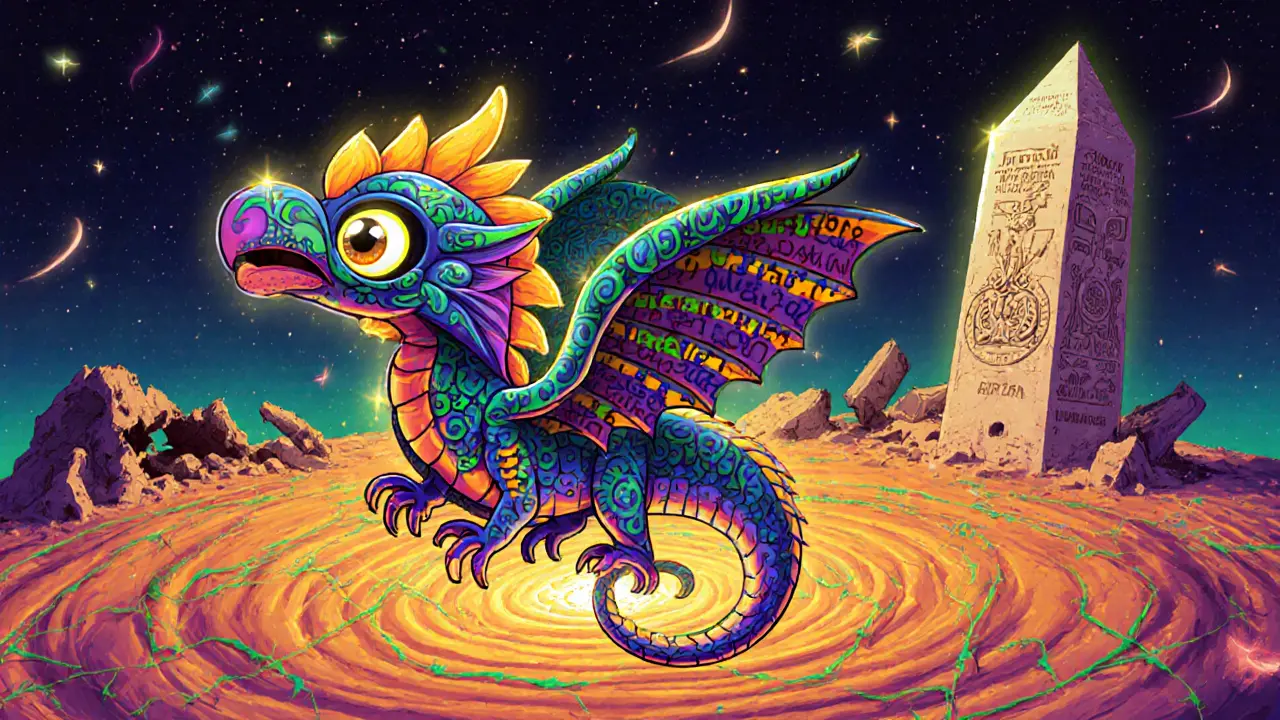





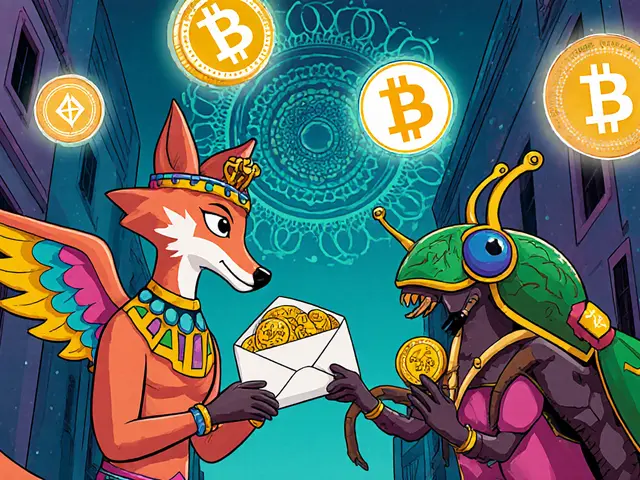
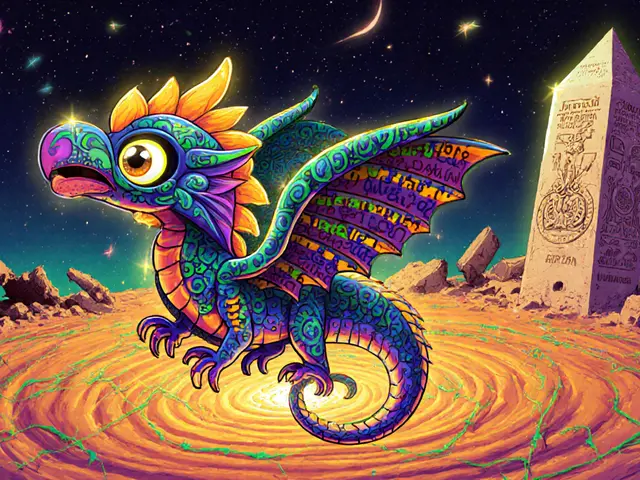
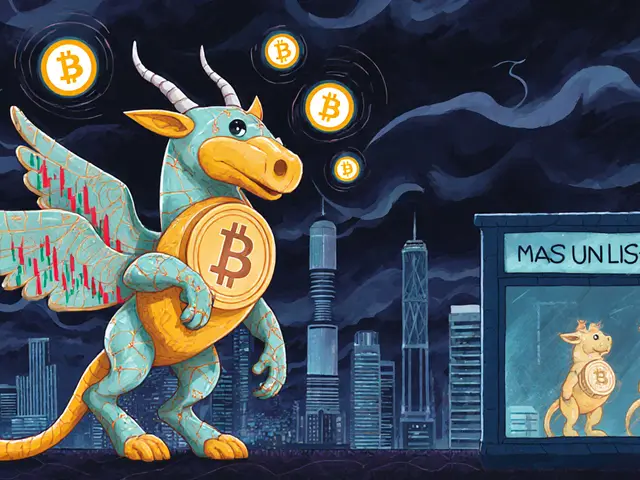

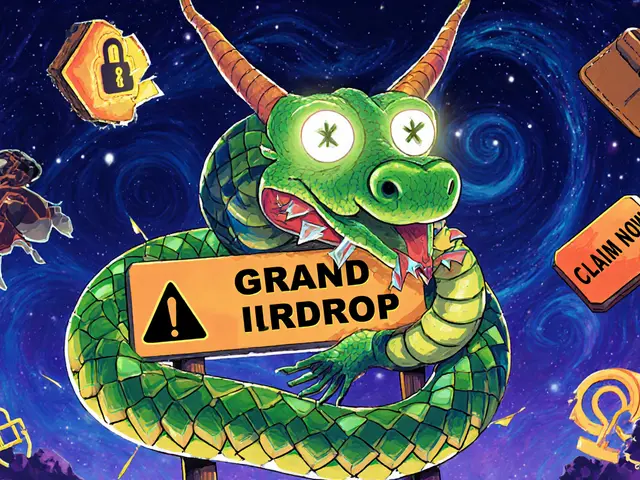
16 Comments
Metadata is the real NFT. The image is just the wrapper. If your metadata dies, your NFT becomes a digital ghost. IPFS isn't perfect but it's the only thing that doesn't vanish when some guy stops paying his AWS bill.
Why are people still using HTTP? That's like putting your house key under the mat and wondering why burglars keep stealing your stuff. Arweave costs a penny. Pinata is free for small stuff. Stop being lazy. Your NFTs aren't art if they disappear in 6 months.
They're all lying about decentralization. The whole thing is a front. OpenSea controls what gets displayed. The metadata is just a puppet. They could change the rules tomorrow and erase your collection. They already have. You think you own it? You're just renting from a corporation with a blockchain logo.
So we're supposed to pay $0.05 to store a JSON file forever... but the art itself is just a PNG? This whole thing is a tax on people who can't read.
The real tragedy isn't broken links. It's that we've turned digital creation into a compliance checklist. We're not making art anymore. We're filling out forms for a marketplace that doesn't care if we exist tomorrow. The metadata standard isn't about preservation. It's about marketability. And that's a quiet kind of death.
STOP OVERCOMPLICATING IT. Name. Image. Traits. That's it. If you're using 12 fields you're trying to impress someone who doesn't even look at the metadata. Just make it work. Host it on IPFS. Pin it. Move on. Your art doesn't need a PhD to be seen.
thanks for this! i was totally lost on the difference between erc721 and 1155. now it makes sense. also i just used hashlips generator and it saved me like 20 hours. dont forget to validate your json before minting!! i learned the hard way lol
One must consider the ontological implications of metadata permanence. If the essence of an NFT resides in its data structure, and that structure is contingent upon external infrastructure, then the token is not truly self-sovereign. It is, in essence, a metaphysical proxy for centralized control disguised as decentralization. The blockchain merely certifies the pointer, not the truth.
Hey new folks - if you're just starting out, don't stress about getting every field perfect. Just nail the name, image, and attributes. Everything else is bonus. Use the OpenSea validator. It's free. And if you're on Solana, just use Metaplex CLI - it does the heavy lifting. You got this.
Oh wow, someone actually wrote a guide that doesn't sound like it was generated by a bot on a caffeine bender? Shocking. And here I thought all NFT docs were just marketing fluff with a JSON schema slapped on top.
Did you know that 92% of NFT metadata is hosted on services owned by ex-Google engineers who left to "build the future"? And now they're all selling their startups to Cloudflare. The decentralization movement is just venture capital in a crypto hoodie.
IPFS is great, but pinning is everything. I had a collection go dark because I uploaded to IPFS and thought that was it. Nope. Had to go back, pay Pinata, and re-mint. Lesson learned. Always pin. Always check. Always sleep better.
It's not about storage... it's about identity. When your metadata vanishes, you're not losing an image - you're losing your digital soul. The blockchain remembers. The world forgets. But what is a soul without memory? We're not minting tokens. We're preserving ghosts. And someone has to be the librarian.
The notion that metadata is secondary to the token is a fundamental misreading of blockchain ontology. The token is the index. The metadata is the referent. Without the referent, the index is meaningless. This is not a technical issue - it is a philosophical one. The medium is not the message. The metadata is the message.
Why do people say "use IPFS" like it's magic? It's not. It's just a network. If no one pins it, it's gone. And if you use Arweave, you're paying for permanence - but who verifies that permanence? No one. It's a trust fall into a black box. And now we're all supposed to believe in digital faith?
Everyone's acting like this is some groundbreaking revelation. Newsflash: 90% of NFTs are garbage. The metadata doesn't save them. It just makes the garbage look prettier before it vanishes. I've seen 50 collections die. All of them followed the "rules." None of them mattered. The market doesn't care about your traits. It cares about hype. And hype is always temporary.